I had no idea,  Julie Schaul! That's quite a list of famous songs by Andy Razaf and the musicians with whom he worked, too. Maybe you'll be able to find a way to incorporate Andy Razaf into your work with Music of US.
Julie Schaul! That's quite a list of famous songs by Andy Razaf and the musicians with whom he worked, too. Maybe you'll be able to find a way to incorporate Andy Razaf into your work with Music of US.
Beyond the fame of Andy Razaf, your mention of John L. Waller, Razaf's grandfather who was also an African American consul, brought me to this article on the Black Past website you also referred to. It's quite a story in itself. I didn't find anything about John L. Waller at loc.gov, however.
I had no idea,  Julie Schaul! That's quite a list of famous songs by Andy Razaf and the musicians with whom he worked, too. Maybe you'll be able to find a way to incorporate Andy Razaf into your work with Music of US.
Julie Schaul! That's quite a list of famous songs by Andy Razaf and the musicians with whom he worked, too. Maybe you'll be able to find a way to incorporate Andy Razaf into your work with Music of US.
Beyond the fame of Andy Razaf, your mention of John L. Waller, Razaf's grandfather who was also an African American consul, brought me to this article on the Black Past website you also referred to. It's quite a story in itself. I didn't find anything about John L. Waller at loc.gov, however.
What a fascinating connection  Mary Johnson! I was curious to learn more about the poet. A. (Andriamanantena) Paul Razafkeriefo, more commonly known as Andy Razaf, was the son of a nephew of Queen Ranavalona III of Imerina kingdom in Madagascar, and the daughter of John L. Waller, the first African American consul to Imerina, who was born in the United States. Razaf went on to become a well-known Harlem poet, lyricist, composer, and sometimes vocalist who worked with composers such as Fats Waller, Eubie Blake, James P. Johnson, and others. The Razaf catalog boasts some of the greatest hits from the Tin Pan Alley era, including “Ain’t Misbehavin’”, “Honeysuckle Rose”, “In the Mood”, “Stompin’ at the Savoy”, “Memories of You”, and “Black and Blue”.
Mary Johnson! I was curious to learn more about the poet. A. (Andriamanantena) Paul Razafkeriefo, more commonly known as Andy Razaf, was the son of a nephew of Queen Ranavalona III of Imerina kingdom in Madagascar, and the daughter of John L. Waller, the first African American consul to Imerina, who was born in the United States. Razaf went on to become a well-known Harlem poet, lyricist, composer, and sometimes vocalist who worked with composers such as Fats Waller, Eubie Blake, James P. Johnson, and others. The Razaf catalog boasts some of the greatest hits from the Tin Pan Alley era, including “Ain’t Misbehavin’”, “Honeysuckle Rose”, “In the Mood”, “Stompin’ at the Savoy”, “Memories of You”, and “Black and Blue”.
- Premier African American Tin Pan Alley writer penned some of the greatest hits of his era Songwriters Hall of Fame
- Andy Razaf Black Past
- Andy Razaf Cafe Songbook
- Andy Razaf historical newspaper coverage
What a fascinating connection  Mary Johnson! I was curious to learn more about the poet. A. (Andriamanantena) Paul Razafkeriefo, more commonly known as Andy Razaf, was the son of a nephew of Queen Ranavalona III of Imerina kingdom in Madagascar, and the daughter of John L. Waller, the first African American consul to Imerina, who was born in the United States. Razaf went on to become a well-known Harlem poet, lyricist, composer, and sometimes vocalist who worked with composers such as Fats Waller, Eubie Blake, James P. Johnson, and others. The Razaf catalog boasts some of the greatest hits from the Tin Pan Alley era, including “Ain’t Misbehavin’”, “Honeysuckle Rose”, “In the Mood”, “Stompin’ at the Savoy”, “Memories of You”, and “Black and Blue”.
Mary Johnson! I was curious to learn more about the poet. A. (Andriamanantena) Paul Razafkeriefo, more commonly known as Andy Razaf, was the son of a nephew of Queen Ranavalona III of Imerina kingdom in Madagascar, and the daughter of John L. Waller, the first African American consul to Imerina, who was born in the United States. Razaf went on to become a well-known Harlem poet, lyricist, composer, and sometimes vocalist who worked with composers such as Fats Waller, Eubie Blake, James P. Johnson, and others. The Razaf catalog boasts some of the greatest hits from the Tin Pan Alley era, including “Ain’t Misbehavin’”, “Honeysuckle Rose”, “In the Mood”, “Stompin’ at the Savoy”, “Memories of You”, and “Black and Blue”.
- Premier African American Tin Pan Alley writer penned some of the greatest hits of his era Songwriters Hall of Fame
- Andy Razaf Black Past
- Andy Razaf Cafe Songbook
- Andy Razaf historical newspaper coverage
Connecting the Dots Between a 1917 Primary Source and a 2024 Presidential Candidate
The Primary Source
Thanks to a "like" from  Gigi Nelson
, I was reminded of a link I shared in 2021 about an African American Perspectives collection at the Library of Congress. In that post, I inserted a poetic preface to a speech given in 1917 by a Los Angeles high school senior named Myrtle Anderson titled "A Plea for Justice." The preface starts with these words
Gigi Nelson
, I was reminded of a link I shared in 2021 about an African American Perspectives collection at the Library of Congress. In that post, I inserted a poetic preface to a speech given in 1917 by a Los Angeles high school senior named Myrtle Anderson titled "A Plea for Justice." The preface starts with these words
Before her white-skinned class she stood,
A stamp of perfect womanhood.
No man has ever shown more grit
Or made a speech more bold or fit.
And it ends with these words:
Were I the thunder and could sing,
Throughout the earth my song would ring.
Of this sweet Ethiopian maid,
Who faced her class, and unafraid.
Connecting the Dots
Only yesterday, I read a Washington Post article about the largely unreported experiences of 2024 Presidential candidate, Kamala Harris, in her high school in Montreal during the 1970s - a time of great political unrest in that part of Canada. (Gift link: https://wapo.st/3YjSi8e.) Although the political upheaval of that period emanated from arguments over language (French vs. English), the cultural and economic underpinnings of the conflict in many ways resembled the racial, caste, and class politics of that same period in the United States.
As one classmate who was interviewed for the article said, "All of a sudden she [Kamala Harris] was a minority within a minority within a minority."
I think for any teacher wanting to guide open and free discussions about the impact of race and culture on the development of future leaders, it would be fascinating to combine the primary source from 1917 with the article from today. Too political? I don't really think so, but I'm no longer in the classroom, so I'd love to read more opinions in the comments.
By the way, the information in the article about the discrimination faced by Kamala Harris' mother, a scientist and a woman and a minority, could take class discussions in all sorts of interesting directions.

https://www.loc.gov/resource/lcrbmrp.t8054/?sp=7
9 - 12 Social Studies/History Civil Rights Civic Engagement Political Candidates
 Mary Johnson
, these are wonderful connections between 1917 and 1970 and 2024. As you mentioned, there has been little reporting about Kamala Harris' high school days in Montreal, and this primary source, plus the Washington Post article link, are perfect resources to share with secondary students during the next 21 days before Election Day 2024!
Mary Johnson
, these are wonderful connections between 1917 and 1970 and 2024. As you mentioned, there has been little reporting about Kamala Harris' high school days in Montreal, and this primary source, plus the Washington Post article link, are perfect resources to share with secondary students during the next 21 days before Election Day 2024!
Connecting the Dots Between a 1917 Primary Source and a 2024 Presidential Candidate
The Primary Source
Thanks to a "like" from  Gigi Nelson
, I was reminded of a link I shared in 2021 about an African American Perspectives collection at the Library of Congress. In that post, I inserted a poetic preface to a speech given in 1917 by a Los Angeles high school senior named Myrtle Anderson titled "A Plea for Justice." The preface starts with these words
Gigi Nelson
, I was reminded of a link I shared in 2021 about an African American Perspectives collection at the Library of Congress. In that post, I inserted a poetic preface to a speech given in 1917 by a Los Angeles high school senior named Myrtle Anderson titled "A Plea for Justice." The preface starts with these words
Before her white-skinned class she stood,
A stamp of perfect womanhood.
No man has ever shown more grit
Or made a speech more bold or fit.
And it ends with these words:
Were I the thunder and could sing,
Throughout the earth my song would ring.
Of this sweet Ethiopian maid,
Who faced her class, and unafraid.
Connecting the Dots
Only yesterday, I read a Washington Post article about the largely unreported experiences of 2024 Presidential candidate, Kamala Harris, in her high school in Montreal during the 1970s - a time of great political unrest in that part of Canada. (Gift link: https://wapo.st/3YjSi8e.) Although the political upheaval of that period emanated from arguments over language (French vs. English), the cultural and economic underpinnings of the conflict in many ways resembled the racial, caste, and class politics of that same period in the United States.
As one classmate who was interviewed for the article said, "All of a sudden she [Kamala Harris] was a minority within a minority within a minority."
I think for any teacher wanting to guide open and free discussions about the impact of race and culture on the development of future leaders, it would be fascinating to combine the primary source from 1917 with the article from today. Too political? I don't really think so, but I'm no longer in the classroom, so I'd love to read more opinions in the comments.
By the way, the information in the article about the discrimination faced by Kamala Harris' mother, a scientist and a woman and a minority, could take class discussions in all sorts of interesting directions.

https://www.loc.gov/resource/lcrbmrp.t8054/?sp=7
9 - 12 Social Studies/History Civil Rights Civic Engagement Political Candidates
The Primary Source
Thanks to a "like" from  Gigi Nelson
, I was reminded of a link I shared in 2021 about an African American Perspectives collection at the Library of Congress. In that post, I inserted a poetic preface to a speech given in 1917 by a Los Angeles high school senior named Myrtle Anderson titled "A Plea for Justice." The preface starts with these words
Gigi Nelson
, I was reminded of a link I shared in 2021 about an African American Perspectives collection at the Library of Congress. In that post, I inserted a poetic preface to a speech given in 1917 by a Los Angeles high school senior named Myrtle Anderson titled "A Plea for Justice." The preface starts with these words
Before her white-skinned class she stood,
A stamp of perfect womanhood.
No man has ever shown more grit
Or made a speech more bold or fit.
And it ends with these words:
Were I the thunder and could sing,
Throughout the earth my song would ring.
Of this sweet Ethiopian maid,
Who faced her class, and unafraid.
Connecting the Dots
Only yesterday, I read a Washington Post article about the largely unreported experiences of 2024 Presidential candidate, Kamala Harris, in her high school in Montreal during the 1970s - a time of great political unrest in that part of Canada. (Gift link: https://wapo.st/3YjSi8e.) Although the political upheaval of that period emanated from arguments over language (French vs. English), the cultural and economic underpinnings of the conflict in many ways resembled the racial, caste, and class politics of that same period in the United States.
As one classmate who was interviewed for the article said, "All of a sudden she [Kamala Harris] was a minority within a minority within a minority."
I think for any teacher wanting to guide open and free discussions about the impact of race and culture on the development of future leaders, it would be fascinating to combine the primary source from 1917 with the article from today. Too political? I don't really think so, but I'm no longer in the classroom, so I'd love to read more opinions in the comments.
By the way, the information in the article about the discrimination faced by Kamala Harris' mother, a scientist and a woman and a minority, could take class discussions in all sorts of interesting directions.

https://www.loc.gov/resource/lcrbmrp.t8054/?sp=7
9 - 12 Social Studies/History Civil Rights Civic Engagement Political Candidates
Testimonials
- I love that there is new info on the site daily!
- I had a wonderful time working with the Library of Congress and learning about all of the resources at my fingertips!
- The TPS Teachers Network has an equal exchange of ideas. You know it's not a place where you're being judged.
- My colleagues post incredibly fine resources and ideas....the caliber of the suggestions and resources make me feel that I take a lot from it. It's a takeaway. And I hope that I can give back as much as I get.
- Going into this school year, I have a fantastic new resource for my own instruction and to share with my colleagues!
- I am very glad that I discovered the TPS Teachers Network through RQI. Great resources can be hard to find out there on the internet!

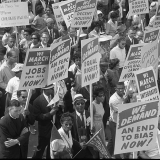




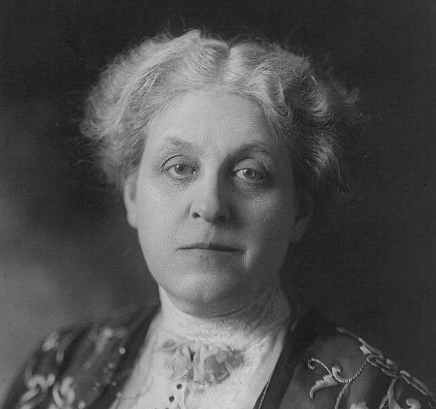
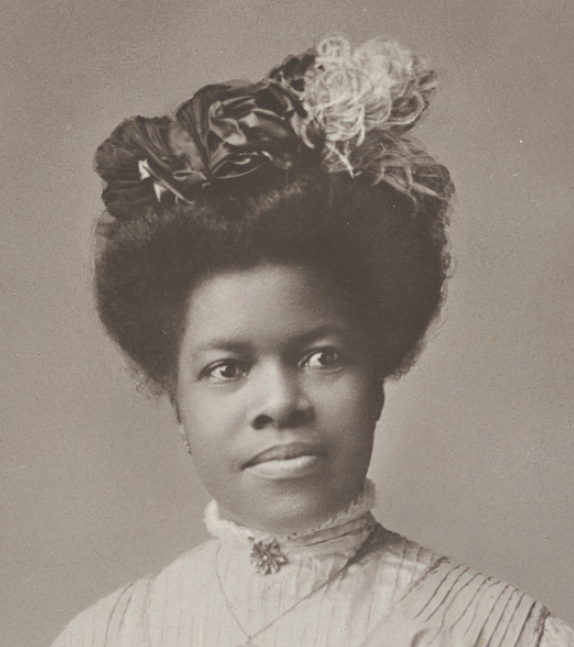
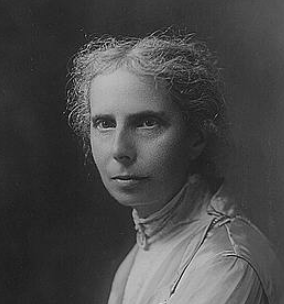
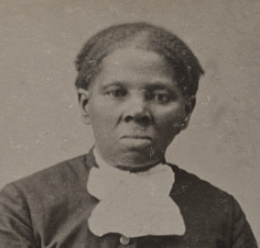


I had no idea, either, before researching Razaf. I also edited my comment above to include a link to a new discussion I posted to the Arts and Primary Sources group about the song, "(What Did I Do to Be So) Black and Blue," which is really interesting and quite powerful.